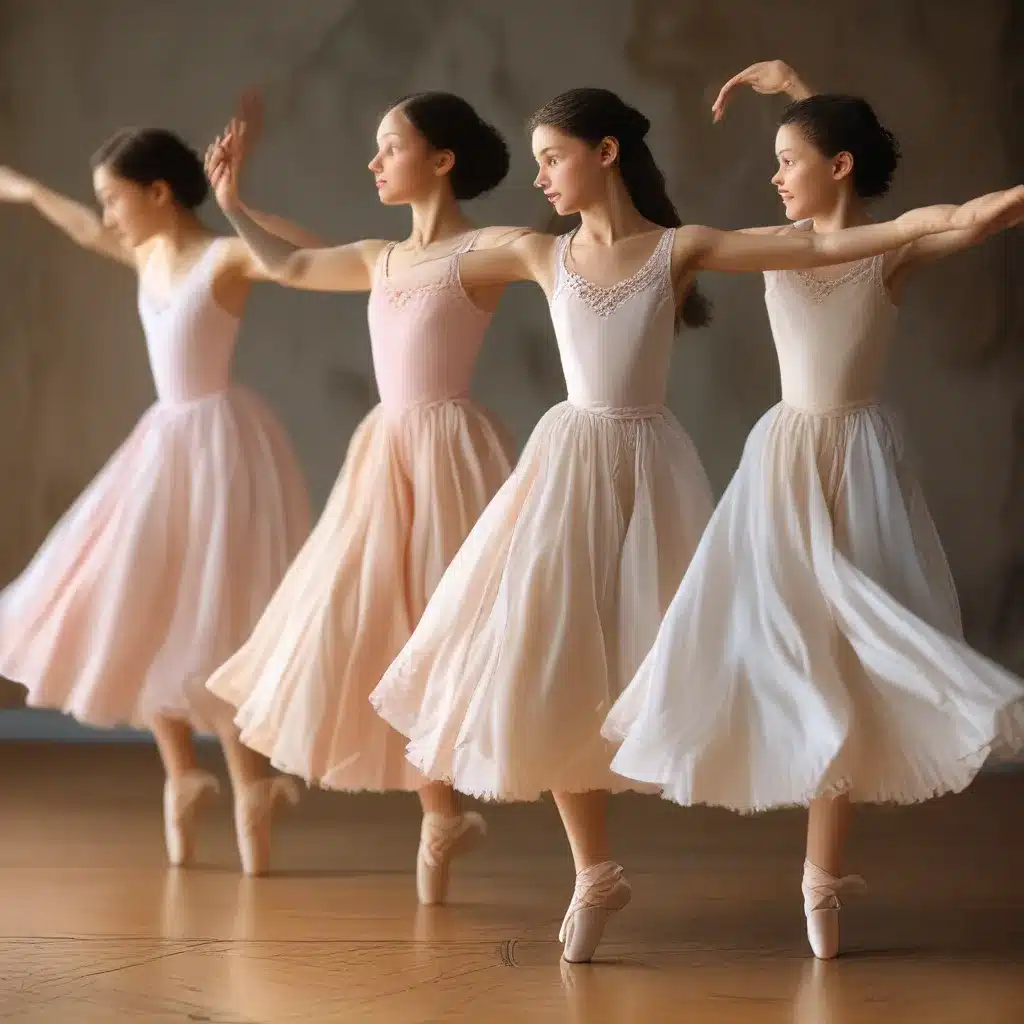
The Beauty of Simplicity: Embracing the Single Pirouette
As a lifelong dancer, I’ve seen it all – the viral videos showcasing mind-boggling turn combinations, the awe-inspiring Instagram posts flaunting triple and quadruple pirouettes, and the endless stream of social media content that can sometimes leave aspiring dancers feeling inadequate. But you know what? I’m here to tell you that the true beauty of dance lies in the mastery of the fundamentals, and that includes the humble single pirouette.
Sure, those high-octane turns are impressive, but they’re often just a flashy trick, a way to grab attention and rack up those social media likes. What really matters, what truly defines a dancer’s skill and artistry, is their ability to execute a clean, controlled single pirouette with grace and poise. It’s the foundation upon which all other turns and variations are built, and it’s a testament to a dancer’s dedication, discipline, and technical prowess.
Think about it this way – a well-executed single pirouette is like the perfect soufflé. It may seem simple, but it requires an unwavering attention to detail, a deep understanding of the underlying principles, and a commitment to perfecting the basic techniques. And just like a soufflé, when it’s done right, the result is a thing of beauty, a delicate balance of strength and elegance that captivates the audience.
The Building Blocks of Mastery
So, what exactly goes into mastering the single pirouette? It all comes down to the three key elements of alignment, balance, and control. These are the fundamental pillars that support a dancer’s ability to execute a flawless turn, and they’re the building blocks that will ultimately lead to more advanced techniques.
Let’s start with alignment. Proper alignment is the foundation of all ballet movement, and it’s especially crucial for the pirouette. From the positioning of your feet to the alignment of your spine and hips, every inch of your body must be precisely positioned to create a stable, efficient rotation. It’s like putting together a well-designed Lego set – if one piece is off, the entire structure is compromised.
Balance is the next crucial component. A pirouette is, by nature, a delicate act of balance, requiring the dancer to maintain a steady, centered position throughout the turn. This means engaging the core, keeping the supporting leg strong and stable, and using the arms and head to help maintain equilibrium. It’s a constant dance of adjustments and fine-tuning, like trying to balance a pencil on your finger.
Finally, there’s control. A pirouette is not just about the number of rotations, but about the dancer’s ability to maintain command over their body throughout the turn. This means keeping the movement smooth and fluid, with no jerky or abrupt transitions. It’s about embodying the music, expressing the choreography, and captivating the audience with the sheer grace and mastery of the technique. It’s like conducting a symphony – every gesture, every subtle shift, must be deliberate and purposeful.
Developing the Discipline
Mastering the single pirouette is no easy feat, and it requires a level of dedication and discipline that can sometimes feel daunting. But trust me, the journey is worth it. By focusing on these foundational elements and committing to consistent practice, you’ll not only improve your pirouette but also develop the kind of technical prowess that will serve you well in all aspects of your dance training.
Think of it like training for a marathon. You don’t just wake up and run 26.2 miles; you start with short jogs, gradually building up your endurance and strength over time. It’s the same with the pirouette. You’ll begin with basic exercises to improve your alignment, balance, and control, and then slowly work your way up to more complex variations and combinations.
And don’t get discouraged by the inevitable setbacks and frustrations. Remember, even the most celebrated dancers in the world have had to work tirelessly to perfect their pirouettes. It’s a never-ending process of refinement and improvement, and the true joy lies in the journey itself.
As you embark on this journey, I encourage you to seek out guidance and support from experienced teachers and coaches. At the Musical Theater Center, we have a team of passionate professionals who are dedicated to helping dancers of all levels master the foundations of dance, including the all-important pirouette. Whether it’s through our in-depth workshops, personalized coaching sessions, or our comprehensive online training program, we’re here to help you unlock your full potential and become the dancer you’ve always dreamed of being.
Finding the Artistry in the Everyday
But the beauty of the single pirouette goes beyond just technical mastery. It’s also about embracing the artistry and expression that can be found in even the most fundamental of movements. When you truly understand the mechanics of the pirouette and have the discipline to execute it with precision, you open the door to a whole new world of creative possibilities.
Imagine the graceful, sweeping pirouette that conveys a sense of melancholy and introspection. Or the sharp, staccato turn that exudes power and confidence. The pirouette can be a vehicle for storytelling, a means of conveying emotion and connecting with the audience on a deeper level.
And here’s the thing – you don’t need to be able to do a million turns to achieve this kind of artistic expression. In fact, sometimes the most impactful moments come from a single, perfectly executed pirouette. It’s about finding the beauty in the simplicity, the poetry in the everyday.
So, the next time you’re tempted to get caught up in the social media hype of flashy, high-turn combinations, remember the true value of the humble single pirouette. Embrace the journey of mastering the fundamentals, celebrate the milestones, and trust that the artistry will blossom from the discipline. Because in the end, it’s not about how many turns you can do – it’s about the grace, the control, and the connection you can create with every rotation.

